The Rich, Enduring Legacy of
Our Lady of the Assumption Catholic Church
Story by Karen Tinsley
Photography by Owen Wolter
One of the first things travelers see crossing the Ambassador Bridge into Canada are her majestic pale green spires ascending into the sky.
The rich patina of those spires (known as verdigris, the process that transforms certain metals into soft shades of green over time), with their fleur-de-lis embellishments (said to signify purity and the Holy Trinity) make for one remarkable welcome.
She basks in the shadow of our iconic international gateway, nestled next to the University of Windsor and Assumption University campuses. Long before these other landmarks were specks on the horizon, Our Lady of the Assumption Catholic Church was here. Established in 1728, her parish preceded her by two centuries.
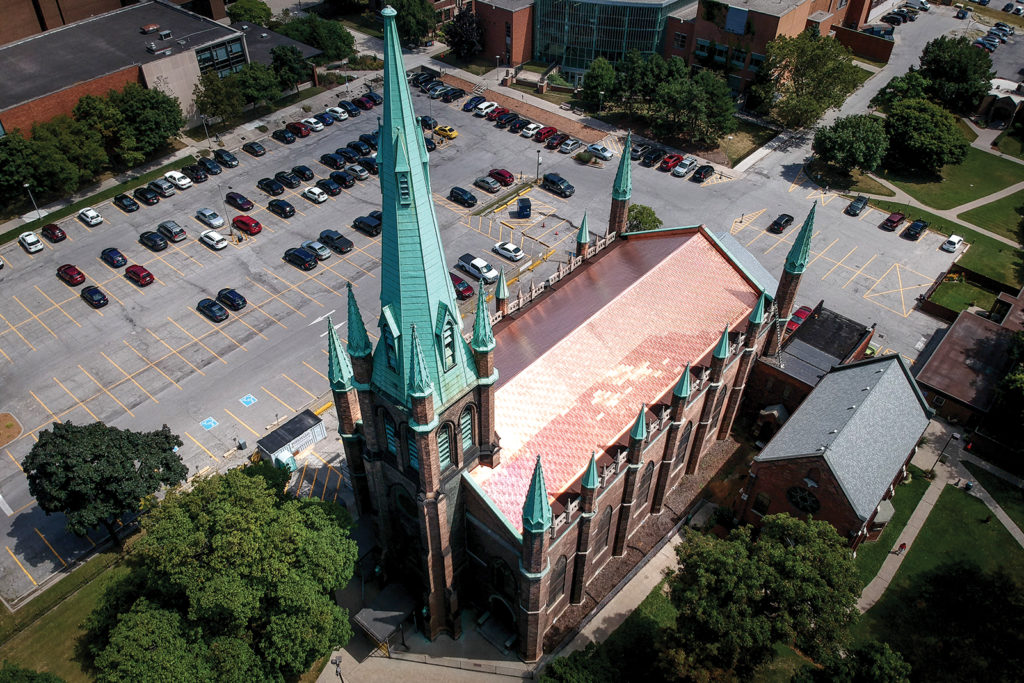
Her majestic Gothic Revival architecture and provenance are not only historically significant to Windsor Essex, but also Ontario, Canada and the Catholic Church itself.
This fascinating saga starring Windsor’s most venerable lady begins near Detroit’s Fort Ponchartrain, where the Huron and Wyandotte settled after being forced off their traditional Huronia territory during the bloody fur trade battles. The Huron beseeched the Jesuits for a Black Robe to minister to them in their new home.
As a result, “The Mission of Our Lady of the Assumption among the Hurons of Detroit” was established (making Assumption the oldest continuous parish in Ontario and the 2nd oldest in Canada).
Almost directly across the river is Ste. Anne de Detroit, the 2nd oldest operating U.S. Catholic parish; priests on both shores have long collaborated, cementing another meaningful connection between our border cities.
From 1767 to 1787, Assumption parish priest Father Pierre Potier meticulously documented every birth, marriage and death. His conscientious records paint vividly accurate portraits of everyday life: infant mortality was high; typical families included at least six members; most women were married by age seventeen. Most parishioners could not read or write. Black and Indigenous slavery were prevalent.
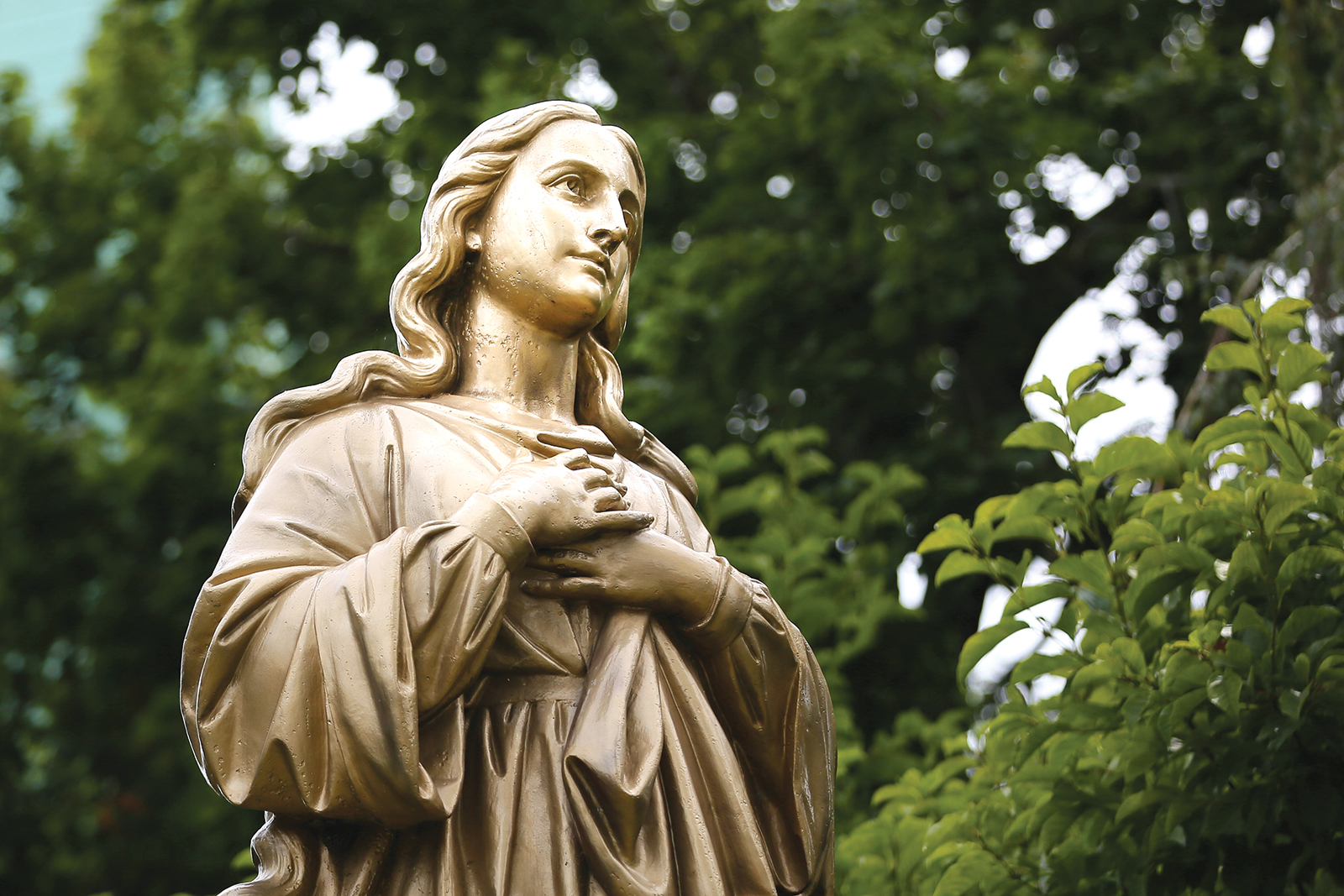
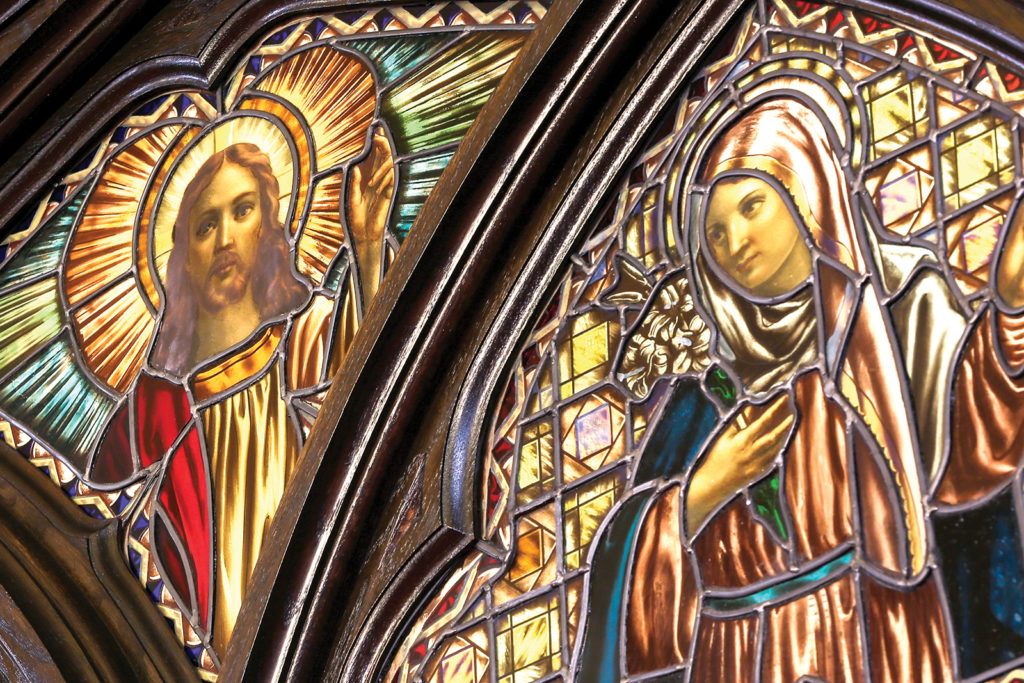
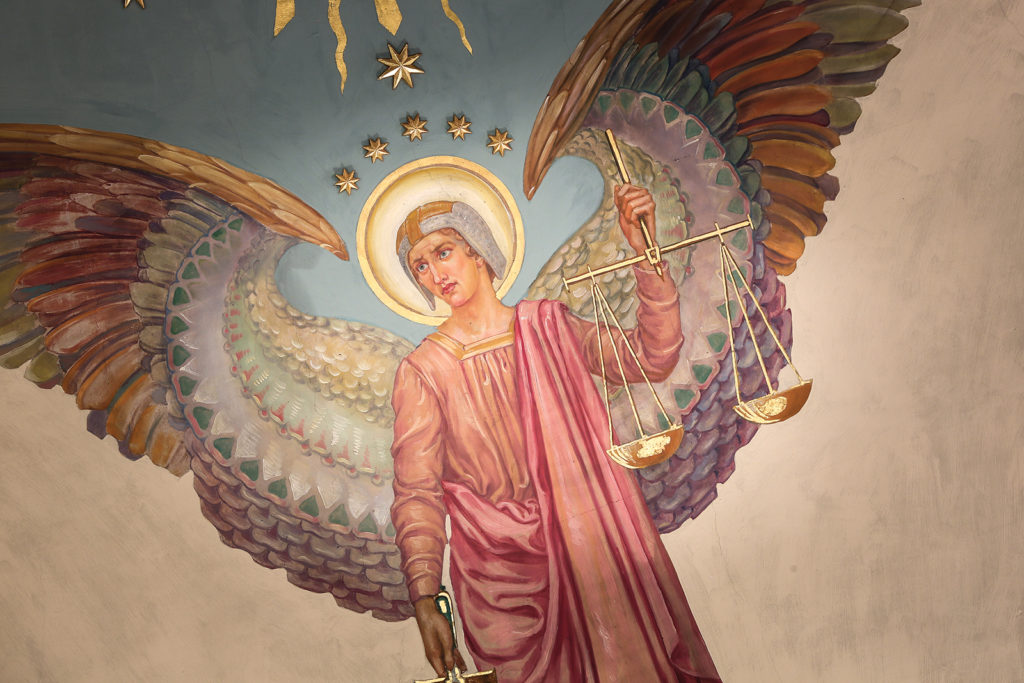
Father Potier’s successors concluded that Our Lady of the Assumption Parish warranted its own church. A presbytery and church hall were built on land donated by the loyal Huron.
One of the finest appointments to the sturdy new timber church was a hand-carved pulpit by renowned Detroit woodcarver Francois Frerot, featuring scenes of late 18th century life. Two and a half centuries later, this pulpit still graces the church. The fourth cornerstone was laid on July 7, 1842.
In 1843, Jesuits from France took charge of the parish. The first Bishop of the London Diocese transferred his headquarters to the Towne of Sandwich in 1845; the Jesuits departed. The Basilian Fathers of Toronto assumed management of the parish and Assumption College (which opened in 1857). First superior Father Dennis O’Connor oversaw the addition of a graceful church tower and sanctuary, where stained glass windows were installed in both the sanctuary and apse. The spectacular windows in the main part of the church were erected in 1882.
An elaborate stone altar was imported from France in 1887.
Construction of the Rosary Chapel began around 1907. Stained glass windows representing the fifteen mysteries of the Rosary were donated.
Several more changes culminated in 1925 when the sanctuary floor was tiled and an exquisitely carved Italian marble communion rail was acquired.
By 1934 a new roof was essential; asbestos slates replaced rotting wooden shingles. At the same time, the steeple and minarets were copperized. A balustrade made of stone from the old Sandwich jail replaced a wooden one.
The Depression impoverished numerous parish families in the late 1930’s. Disillusioned with their faith, many had stopped attending church. In response, the parish financed the mission chapel of the Blessed Sacrament on Prince Road near St. Edward’s school.
In 1970, the City of Windsor designated Assumption Church an historical edifice; in 1985 the Province of Ontario registered an easement, designating it as a heritage building.
By the early 2000’s, Windsor’s most venerable lady was in critical need of a $20 million restoration.
Every Catholic parish is responsible for daily maintenance and repairs to their buildings; they must rely on fundraising to support any work over and above that scope. After two fundraising campaigns failed, the church was closed and placed on the National Trust for Canada list of the 10 most endangered heritage buildings.
Demonstrating complete confidence and belief in the historical significance of this restoration, the London Diocese kicked off a new fundraising effort with a rare $1 million donation. Even more meaningful was Bishop Ronald Fabbro’s personal donation of $25,000.
In 2019, The Heritage Trust for Canada declared the church “saved”. Restoration Phase 1 began, including a new copper roof, HVAC system and asbestos removal. After five long years, Our Lady of the Assumption reopened to a full house, with hundreds more spilling outside.
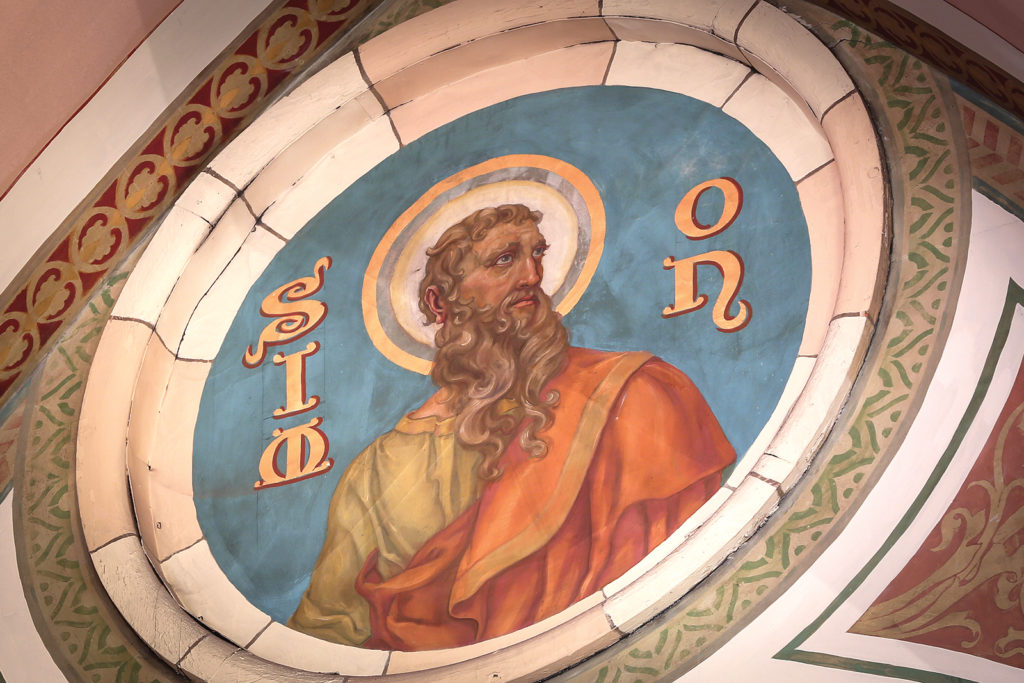
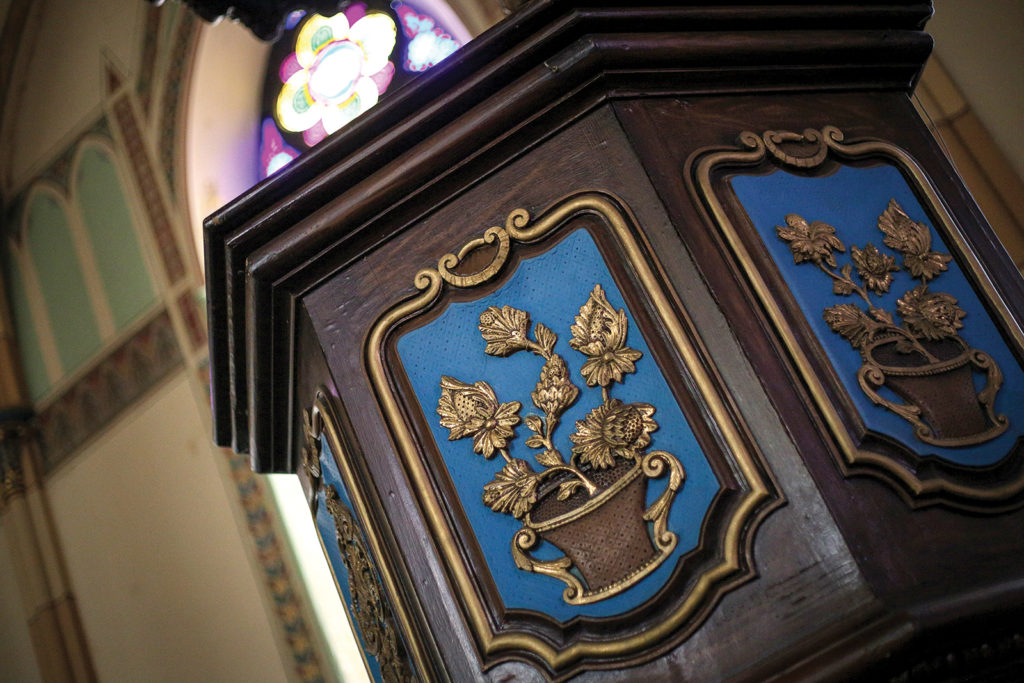
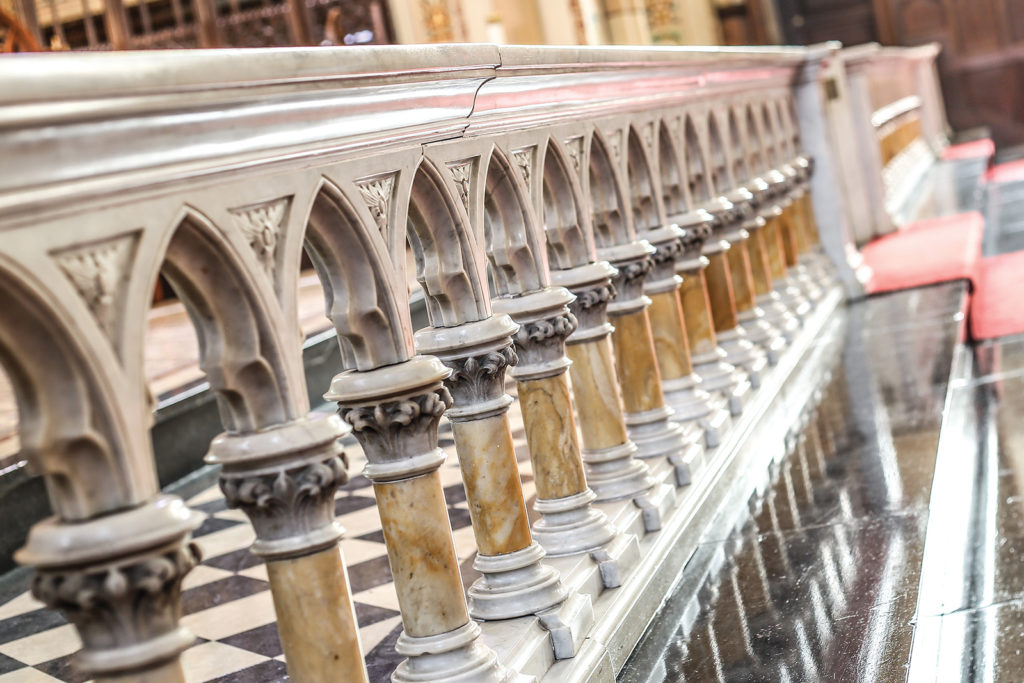
Phase 2 (restoration of interior walls ravaged by years of water damage) is well underway. Using undamaged areas for reference, 18 exact colour palettes and stencil templates have been meticulously replicated. Phase 2 also includes a new Sacristy, stained glass restoration and exterior brick and masonry.
Lawyer Paul Mullins, who leads the restoration project (and is also the overarching driving force fueling fundraising efforts) says, “we celebrate our Tricentennial in 2028; our goal is to have the project complete before then. The church has also applied to be recognized as a Nationally
Significant Historic Site.”
Project Manager, Tony Pupatello (Windsor-based Pupatello & Sons Ltd.) ensures the Assumption Church Restoration does not incur debt; unless and until there’s cash in hand, no work happens. Chosen as the PMAC (Project Management Association) 2022 Canadian Small Project of the Year award, the project is on time and on budget.
Mullins and Tony Pupatello are our guides for a fulsome tour; the painstaking attention, care, quality and craftsmanship are obvious. The vaulted ceilings encompass a simple motif of stars, each cast in plaster, painted gold and affixed to a robin’s egg blue “sky”, evoking a feeling of heaven. Each star must be removed, refurbished and replaced.
We ascend the labyrinth of the century-and-a-half-old attic; we traverse wooden plank catwalks with overhead “lifeline” grab ropes that serve as footpaths over insulation-clad vaulted church ceilings, separated by steep crevices that descend dozens of feet below into darkness.
In the belfry we find the massive metal bell and one magnificent circular stained-glass window depicting the ascension of Mary.
Our Lady of the Assumption stands as an exceptional example of Canadian Gothic Revival architecture; the only surviving example in Canada honouring the Assumption of Mary in such a harmonized way.
A Catholic icon in our predominantly Protestant province, no other church in Canada can claim the inspiration and international influence of Windsor’s most venerable lady.


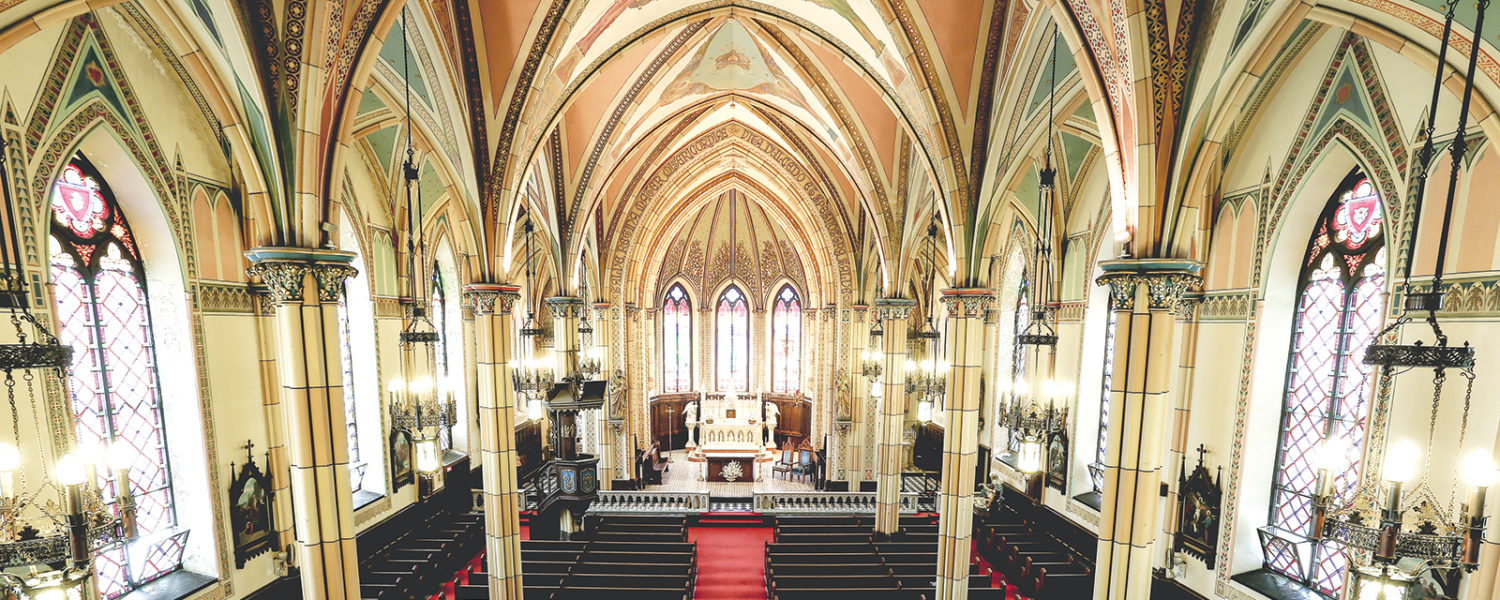

Add comment